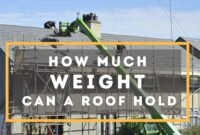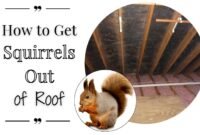Understanding the myriad of terms within the construction industry is complicated if you have never been involved directly in the field. You may find many tools and materials available, including plywood.
Among many plywood types, RTD plywood is one of the more recent options. Now, you may wonder ‘what is RTD plywood’ and how it differs from other plywood varieties. To find out about the answer, read the explanation below.
RTD stands for “Resistance Temperature Detector“, which refers to detector used in the development of this particular type of plywood
What Is RTD Plywood and Its Categories
RTD plywood is often deemed the modern grade plywood generation manufactured for the construction industry. In contrast to other plywood types, the abbreviated term doesn’t indicate the plywood grade. RTD stands for ‘Resistance Temperature Detector,’ a detector used to develop this type of water-resistant plywood.
The detector provides a temperature reading during the layer bonding process of the plywood sheet, which is crucial in manufacturing to ensure the exterior adhesive used is effective, especially in environments with high humidity or constant moisture.

As with other plywood variants, RTD plywood is also graded using the N, A, B, C, and D grading systems. The grades are determined by the quality of each plywood’s side by basing it on the amount and size of allowed defects. N is the best quality possible as the higher grade in the system, and D is the lowest quality.
Read also: What Size Plywood for Roof and Construction
The two sides of the plywood sheet have a separate grade, even though both are noted together. Most sheets possess a side with a better quality grade than the other, referred to as the ‘face side’ while the side with lower quality is called the ‘reverse side.’
After you have learned more about plywood, you might be curious about what RTD plywood is used for. The answer will depend on which type of RTD plywood it is. Here are two of the categories:
Exposure 1
Also known as RTD or CDX plywood, this type of plywood has a resistance to moisture to an extent, but it shouldn’t be exposed to moisture consistently. For instance, it can resist moisture during the process of construction. It makes a great choice for roof sheathing because it allows the air to travel and prevents the condition from being too wet.
Exterior panels
This plywood category is also commonly referred to as RTD sheathing. It is specifically designed to withstand constant exposure to moisture. It is water-resistant and is a perfect option to install in areas with high moisture levels, such as roofs or outdoor spaces, making it an ideal exterior-rated panel for applications like wall sheathing.
Many people may be curious and wonder, is RTD plywood fire-rated? The RTD plywood type that has a fire retardant rating is the one that is categorized as exterior panels. They are treated with special chemicals to be resistant to fire. The chemicals act as a physical barrier layer and prevent the flame from spreading, so the plywood can reduce the fire expansion in the building.
Read also: What Is Elastomeric Roof Coating
RTD plywood is amongst the most recent and advanced types of plywood available in the market. By properly understanding what RTD plywood is, you have a better chance to make a wiser decision on your next home refinement or flooring renovation project.


